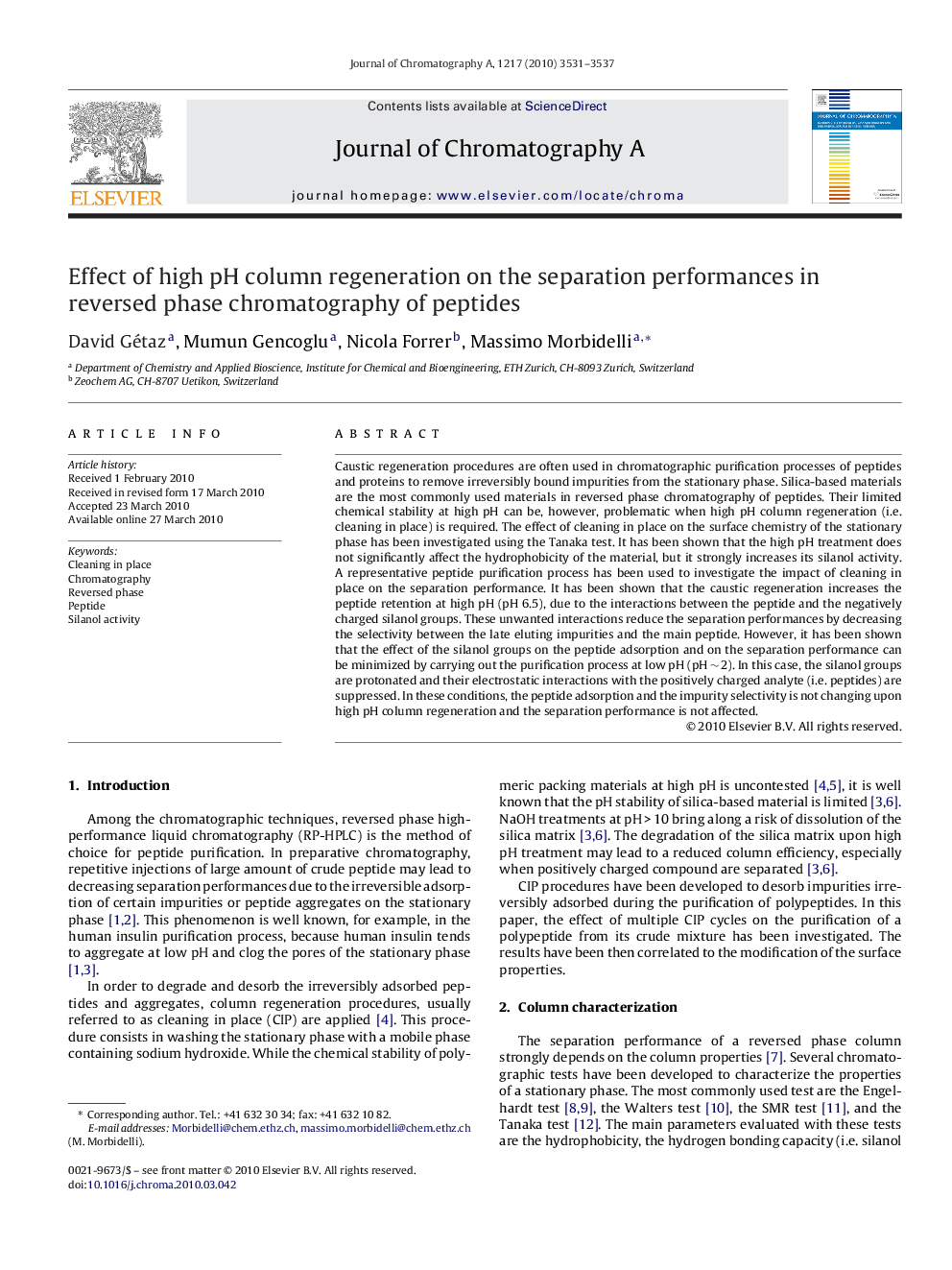| Article ID | Journal | Published Year | Pages | File Type |
|---|---|---|---|---|
| 1205339 | Journal of Chromatography A | 2010 | 7 Pages |
Caustic regeneration procedures are often used in chromatographic purification processes of peptides and proteins to remove irreversibly bound impurities from the stationary phase. Silica-based materials are the most commonly used materials in reversed phase chromatography of peptides. Their limited chemical stability at high pH can be, however, problematic when high pH column regeneration (i.e. cleaning in place) is required. The effect of cleaning in place on the surface chemistry of the stationary phase has been investigated using the Tanaka test. It has been shown that the high pH treatment does not significantly affect the hydrophobicity of the material, but it strongly increases its silanol activity. A representative peptide purification process has been used to investigate the impact of cleaning in place on the separation performance. It has been shown that the caustic regeneration increases the peptide retention at high pH (pH 6.5), due to the interactions between the peptide and the negatively charged silanol groups. These unwanted interactions reduce the separation performances by decreasing the selectivity between the late eluting impurities and the main peptide. However, it has been shown that the effect of the silanol groups on the peptide adsorption and on the separation performance can be minimized by carrying out the purification process at low pH (pH ∼ 2). In this case, the silanol groups are protonated and their electrostatic interactions with the positively charged analyte (i.e. peptides) are suppressed. In these conditions, the peptide adsorption and the impurity selectivity is not changing upon high pH column regeneration and the separation performance is not affected.
